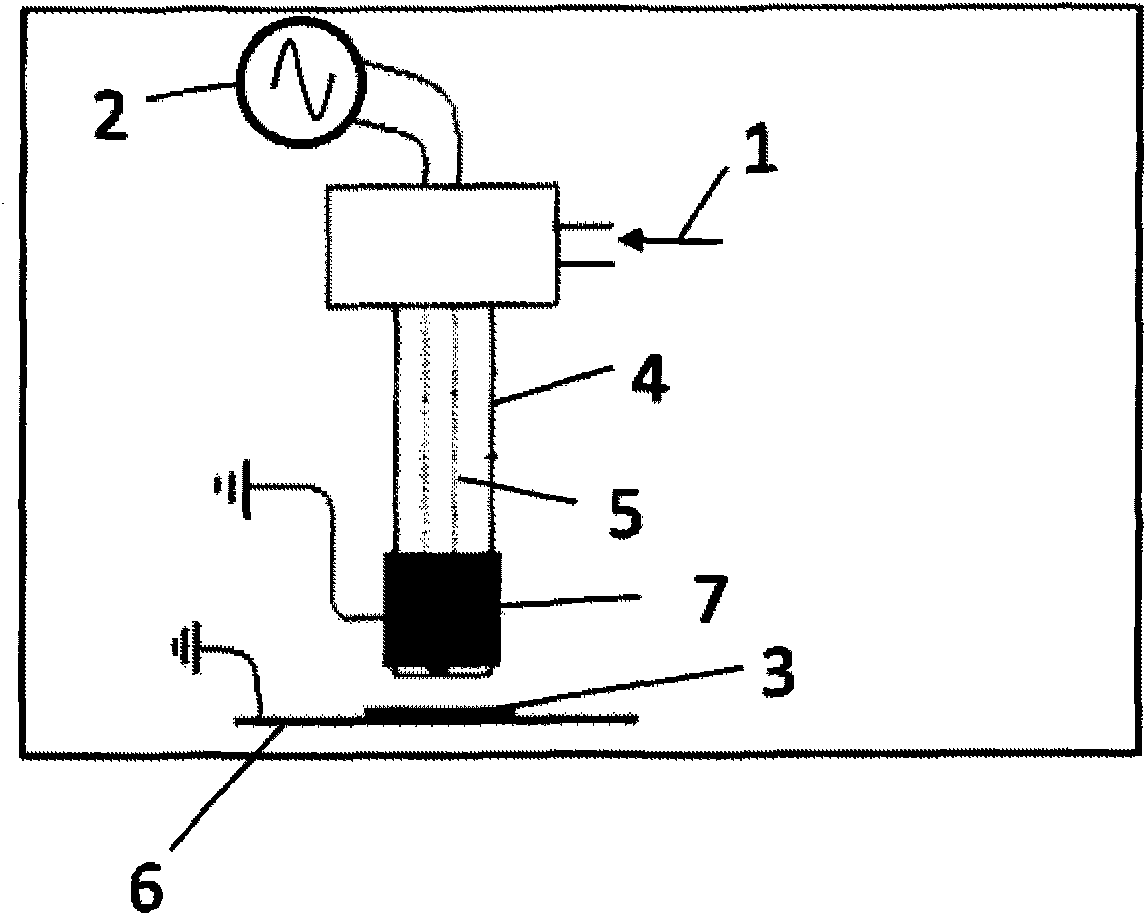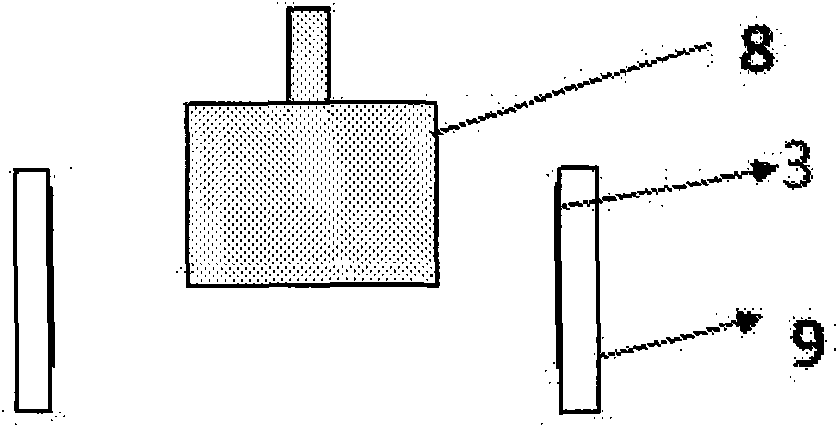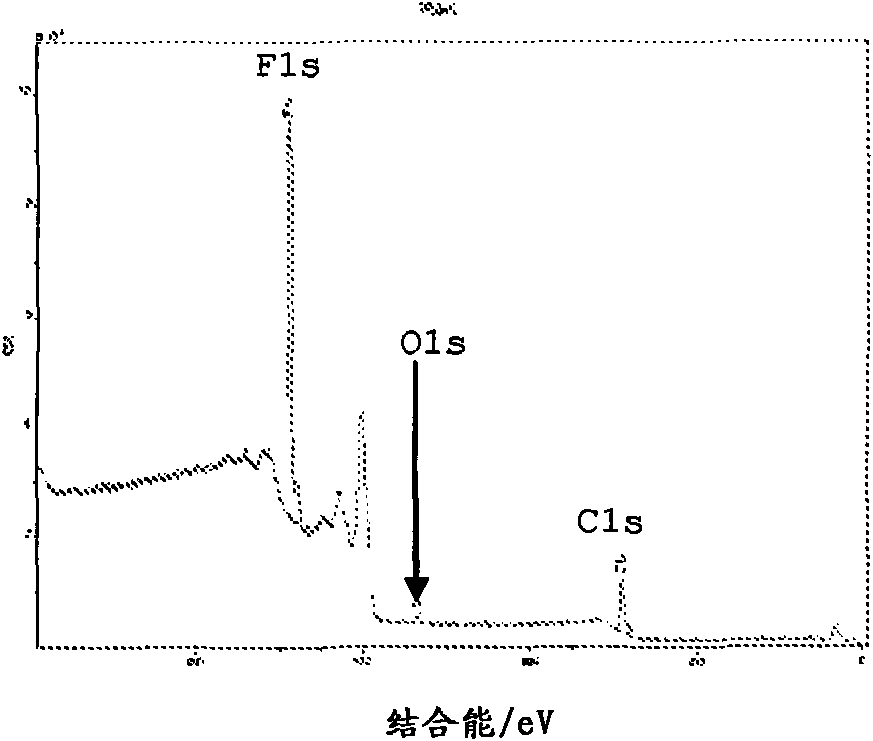Method of depositing fluorinated layer from precursor monomer
A technology of fluorinated and fluorinated compounds, which can be applied to devices, coatings, and special surfaces that coat liquids on surfaces, and can solve problems such as reducing surface hydrophobicity
- Summary
- Abstract
- Description
- Claims
- Application Information
AI Technical Summary
Problems solved by technology
Method used
Image
Examples
Embodiment 1
[0057] Example 1 shows the deposition of perfluorohexane on PVC, which was carried out in the post-discharge region under the following conditions:
[0058] Cut a sample 3 (Solvay brand PVC film) of 4 cm × 4 cm, clean it with methanol and isooctane and place it in a low-temperature plasma torch operated under normal pressure ( figure 1 ) (dielectric barrier discharge) outlet (at 0.05cm). The fluorinated monomer (perfluorohexane) was placed in a glass (Pyrex) bubbler immersed in a Dewar container containing a mixture of acetone and dry ice. The temperature of the mixture (and thus the temperature of the monomers) was about -80°C. The vapor pressure of perfluorohexane at this temperature is about 1.2 mbar. The bubbler was then fed with a flow of argon with an initial overpressure of 1.375 bar. Argon / perfluorohexane gas mixture 1 is brought into the torch. Plasma was initiated for 1 minute at a voltage of 3,200 volts and a frequency of 16 kHz.
Embodiment 2
[0060] Example 2 shows the deposition of perfluorohexane on PVC produced in the dielectric barrier discharge region under the following conditions.
[0061] The sample was attached to the inside of the outer electrode 9 of the cylindrical dielectric barrier discharge region. The "hot" electrode 8, to which the voltage is applied, is an inner electrode covered with an alumina cup. High alumina cement provides sealing ( figure 2 ).
[0062] The fluorinated monomer was brought into the discharge region as in Example 1. Subsequently, a treatment (treatment in the discharge area) was carried out at a voltage of 3,000 V and a frequency of 20 kHz for 1 minute.
[0063] It is confirmed by X-ray photoelectron spectroscopy that there is indeed a fluorinated layer on the surface of the PVC film. image 3 and 4 The spectrum in , shows a full view and a zoom-in view of the carbon region. The fluorine peak located at 689eV clearly identifies CF 2 The presence of fluorine in the grou...
Embodiment 3
[0066] Embodiment 3 is the same as Embodiment 1, except that the substrate in this embodiment is polyethylene.
PUM
 Login to View More
Login to View More Abstract
Description
Claims
Application Information
 Login to View More
Login to View More - R&D
- Intellectual Property
- Life Sciences
- Materials
- Tech Scout
- Unparalleled Data Quality
- Higher Quality Content
- 60% Fewer Hallucinations
Browse by: Latest US Patents, China's latest patents, Technical Efficacy Thesaurus, Application Domain, Technology Topic, Popular Technical Reports.
© 2025 PatSnap. All rights reserved.Legal|Privacy policy|Modern Slavery Act Transparency Statement|Sitemap|About US| Contact US: help@patsnap.com



